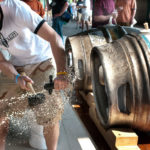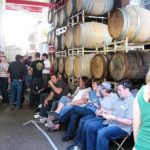 What can you say about August that we each haven’t thought in our hearts of hearts? We are now well into the downside of the year, four months and three weeks and a bit until Christmas. It’s always struck me as odd that the first half of the year has seven months while the second only has five. August. Hmm. Plus it all gets a bit endtimesy around now. The garden gets weedy and a bit tired in the corners. We even got forest fire smoke from Pennsylvania this week, for God’s sake! Looks!! Good thing there’s all those fit folk at the Olympics in Paris, over there throwing themselves against the track, against the ball, against ocean waves and against each others fists to give us all at home cheering on the sofa an endorphin boost. Speaking of the Olympics, how’s the beer?
What can you say about August that we each haven’t thought in our hearts of hearts? We are now well into the downside of the year, four months and three weeks and a bit until Christmas. It’s always struck me as odd that the first half of the year has seven months while the second only has five. August. Hmm. Plus it all gets a bit endtimesy around now. The garden gets weedy and a bit tired in the corners. We even got forest fire smoke from Pennsylvania this week, for God’s sake! Looks!! Good thing there’s all those fit folk at the Olympics in Paris, over there throwing themselves against the track, against the ball, against ocean waves and against each others fists to give us all at home cheering on the sofa an endorphin boost. Speaking of the Olympics, how’s the beer?
Anyone who was planning on heading over to Paris for the 2024 Olympics and expected to be having a boozy jaunt in a stadium is going to be sorely disappointed. Almost everyone who has got tickets to see bits of the 2024 Olympics will not be allowed to buy alcohol at the venues where the sporting competitions are taking place… if you must drink beer inside the venues then you’ll have to stick with the non-alcoholic stuff. For half a litre of non-alcoholic beer you’ll need to be spending €8 (£6.74), while if you want a 400ml drink of zero alcohol beer with some lemon juice in it that’ll cost €6 (£5.05).
Whhhaaaaat?!?!? Really? I’d be tempted to get me a robot but I suppose that makes sense in the keeping the eye on the ball sense for spectators but, more importantly, what is the point of cutting NA beer with juice? Don’t worry, however, as the rich in catered VIP zones will be able to drink… because… France… or the Olympics… or…
Same as it ever was? Things go around and around. Consider this piece from Jessica Mason in TDB on salting your beer:
According to the reports via Parade, the trendsetters claimed that “adding a bit of salt to your inexpensive brew will enhance the flavour” and described how “some people add salt to certain beers, like sours or IPAs, to enhance the fruity notes and reduce the bitterness” and suggested that “for those ‘cheaper’ beers, it’s supposed to make the brew taste a bit more highbrow”. The report emphasised how “Texans take beer salt so seriously” and said that drinkers were “likely to find lots of flavoured beer salt options when you want to crack open a cold one”.
Taverns when I was a lad in Halifax, Nova Scotia in the 1980s had shakers of salt on the tables. It was an old guy thing even back then, used by the hard cases in the back corners, but soon a little rattle of the shaker was a habit at the Seahorse or the Lower Deck when the unpasturized generic draft was a little off. Definitely done at the Midtown.
More information has been released on experimentation with the hotest new brewing grain in town, fonio. Interesting news even if this was a rather silly statement from Carlsberg director of brewing science and technology Zoran Gojkovic apparently (but I hope incorrectly) recalling a past discussion with Garrett Oliver:
“The internet says it is millet, but there are lots of millet grains and this one comes from Africa. But, back then, I misunderstood was what it really was all about. If someone tells you something is beef, but really it is like a variety, like wagyu steak, then it can be more easily understood. What I didn’t know was that fonio, compared to other kinds of millet, is like the wagyu steak of grains. Millet, as a cereal could be quite boring, but this in its pure formula is not boring. It is elegant.”
I’m more comfortable with it being the warp drive of millets – but only because that is obviously even more silly. Or is it the warp drives of wagyu? Or the wagyu of warp? That’s the fonio beer name I want to see: Wagyu of Warp!
And, speaking of silly, we have yet another study that resulted from the study of studies that studied booze and, again, it has been determined that there has been a lack of studiouness about that J-Curve fibbery:
…a new analysis challenges the thinking and blames the rosy message on flawed research that compares drinkers with people who are sick and sober. Scientists in Canada delved into 107 published studies on people’s drinking habits and how long they lived. In most cases, they found that drinkers were compared with people who abstained or consumed very little alcohol, without taking into account that some had cut down or quit through ill health. The finding means that amid the abstainers and occasional drinkers are a significant number of sick people, bringing the group’s average health down, and making light to moderate drinkers look better off in comparison.
I mentioned how dodgy the concept was at least as far back in 2018 but this newer focus on the problem of including “people who had stopped or cut down their drinking for health reasons in the comparison group” is critical. Note: not drinking because you are sick is different that being sick due to not drinking.
Note too: “golloping beer with zest” was a thing. Gary explains.
In Pellicle, David Jesuason wrote about one of the the tougher aspects, the mental health implications, that can go along with setting out to run a small brewery. This is how he set the scene at McColl’s Brewery of Evenwood, County Durham before help arrived:
“I came here thinking all I have to do is 150 casks a week and it didn’t happen,” Danny says. “Because I did it [before] I thought I was capable of doing it and not even knowing it was the wrong [thing to do] as well.” Danny’s mental health suffered because there was no long-term strategy, just day-to-day drudgery. Graft instead of focus. “I couldn’t make good decisions,” he tells me. He was running the entire operation by himself: brewing, selling and even delivering the beer to customers. It was far too much to take on, his mental health suffered and Gemma, his wife, became worried about him having suffered from depression herself.
That piece reminded me of the life of a farmer, alone with their business subject to the whims of nature and the trade. Should brewing trade associations provide mental health support programs similar to those being set up for agriculture?
Also on the ag beat, Stan has given us something to chew on with his July 2024 edition of Hop Queries, Vol. 8, No. 3 for those who are trying to collect a full set. He mentions that harvest time has begun, triggering images of golden light on hedgerow graced horse plowed scenes, perhaps mixing with Beethoven’s 6th wafting quietly in from somewhere… then – WHAMMO – the invasion of the lab-coated eggheads begins:
Scientists at Sapporo in Japan used headband sensors to measure the brainwaves of participants… The subjects reported feeling relaxed by the aromas of linalool and geraniol because they provided floral and green impressions… An increasing tendency in the rhythm regularities of the frequency fluctuations of the right frontal alpha-waves while drinking a European pilsner-type beer with aromas characterized by hops.
HEADBAND SENSORS!!! And, for the double, Stan pointed to this number crunching post from Phil Cook on Monday but (even though I may risk breaking an unwritten weekly updating rule) I want to unpack this point in more detail – one key difference between Australian and other beer judging events:
Because there’s a list of every beer entered, not just those that win medals, we can calculate some ‘batting averages’ to better compare how each brewery fared. So, I’ve worked out each entrant’s medal percentage (MPC: how many of their beers won a medal, of any kind) and their points per entry (PPE: adding 3 for gold, 2 for silver, 1 for bronze, then dividing by number of entries submitted). Bigger numbers are better in both cases; overall about 74% of beers entered earned a medal,2 and if your PPE was 1.00 or higher your brewery was in the top half of the competition.
This would be a huge step towards making the results of these events more meaningful that those of the moveable buffet of the international circle of they who judge. Being able to figure out brewery top rankings as well as those surprising disappointments would be a great benefit to consumers. But who in beer puts the buyer first?
Perhaps connected, Jeff shared his thoughts on the financial perils of being a freelancer writing about the brewing trade without separate income:
Writing is a terrible way to make a living. It’s why people end up going into marketing. You could spend your days scrambling after $600 articles, or you could get a job for $60k with benefits. This is why we bleed great writers, who take their services to companies who will pay what their work is worth. It’s not just that the money’s bad—it’s also hard to get. If you could somehow stack up your articles and get a couple in every week, you could make a decent living, maybe fifty, sixty grand a year before taxes… Trying to pitch stories, and then research, report, and write a hundred of them in a year? I’m not saying it’s impossible, but again, you’d be barely making more than working at McDonald’s if you somehow enjoyed that level of “success,” which perhaps 2-3% of working freelancers enjoy.
The best line was near the end: “If you have any other choice, don’t write.” What he means (of course… or rather I hope!) is don’t write for money but this isn’t news.* Still… write. Writing a free, joyful and easy experience of expression. Scribble, jot, draft, forget and rediscover – and, yes, even submit. Just don’t think you’re going to be buying the kiddies shoes with the income.
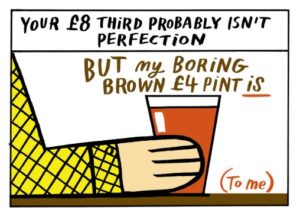 Joyful, too, is Dave “Still No Relation” Bailey’s cartooning, also in Pellicle, which this month explored the notion of perfection. And if you want an example of writing for joy, ATJ has been working on one particular theme quite a bit over at his Substack, that being ATJ sitting in a pub and looking at the details of the scene around him. Second or third time I read one of his I thought “hmm…now, that sounds familiar” BUT as this week’s edition testifies its his process being worked out before our eyes:
Joyful, too, is Dave “Still No Relation” Bailey’s cartooning, also in Pellicle, which this month explored the notion of perfection. And if you want an example of writing for joy, ATJ has been working on one particular theme quite a bit over at his Substack, that being ATJ sitting in a pub and looking at the details of the scene around him. Second or third time I read one of his I thought “hmm…now, that sounds familiar” BUT as this week’s edition testifies its his process being worked out before our eyes:
My eye was caught by a faded photo of the pub, sometime before World War I. Outside it, there stood a line of long dead regulars, mainly men, standing still, a couple smiling, the rest sombre and holding themselves stiffly as if on parade, which several years later many of them would be, ready to march off to war. A long ago day, the sun shining maybe, though given the quality of the photo it was hard to say. Bowler hats, cloth caps, none of them bareheaded for that was not how they presented themselves to the world then. I’d like to think that once the photographer finished, off the men went into the pub, glasses of ale and cider purchased and amid the hubbub there would have been little time for reflection.
Sharp stuff. And it sure beats the sort of cash-focused writing that has recently given us such gems as “deepest echelons of the industry” and “with demand being high, the category has continued to thrive, despite the sector struggling” and the astoundingly poorly thought out alleged expression of expertise “Liquids within the same ‘competitive set’ are not distinctive from one another as liquids.” Bring on the robots of A.I.! Viva Robots!!
No, I didn’t mean that. There are no robots of joy. It’s actually all around us already now if you look for joy. We see it in a long wandering piece about wandering at length. And we also see it at home as when Rachel Hendry in her emailed newsletter J’Adore Le Plonk shared some thoughts on the role and value of the leftover bottle of wine there in the kitchen that was opened a few days ago… and may have lost whatever finesse it had:
Service work should neither be seen nor paid, tends to be the general consensus and when my wine joins me in a position of domestic work I attach the same framework to it. Why add this beautiful, evocative glass of wine to my dish when I can reach for something leftover, or looked down on, fuck it, why not just add water instead? The recipe provides a role for a wine that is past its best, that may otherwise be retired down the drain and into the bin. It doesn’t, however, mean the wine isn’t important. Wine has many roles in our lives and contributor in the kitchen can be one of them. As I work through my hesitation and add a splash of my wine to the courgettes slowly melting into butter I notice I have not lost anything in the process. The wine is still mine to enjoy, I have placed value on an ingredient as I would like to be valued myself and the meal tastes better for it.
And I should have mentioned that Katie wrote a few weeks ago about trying Italian wines with any sorts of unexpected flavours to see what works for you. My tip? Chianti with roast turkey. It can have a swell cranberry vibe going on. Try a turkey and blue cheese sandwich with slices of pear and a cold glass of Chianti. Could sound weird but it works. Not this weird, mind you, but there that gets a lot going on.
That is it. Enough! Here are the credits, the stats the recommends and the footnotes and the many ways to find good reading about beer and similar stuff via any number of social media and other forms of comms connections.**** Want to keep up with the news before next Thursday? Check out Boak and Bailey every Saturday and Stan back each Monday… with a top drawer effort this week. Elsewhere go look at then listen to Lew’s podcast. And get your emailed issue of Episodes of my Pub Life by this year’s model citizen David Jesudason on the odd Fridays. And Phil Mellows is at the BritishBeerBreaks. Once a month, Will Hawkes issues his London Beer City newsletter and do sign up for Katie’s now revitalised and wonderful newsletter, The Gulp, too. Ben’s Beer and Badword is back with all the sweary Mary he can think of! And check out the Atlantic Canada Beer Blog‘s weekly roundup. There is new reading at The Glass which is going back to being a blog in this weeks best medium as message news. Any more? Yes! Check to see the highly recommended Beer Ladies Podcast. That’s quite good. And the BOAS podcast for the bro-ly. And the long standing Beervana podcast …except they have now stood down. Plus We Are Beer People. The Boys Are From Märzen podcast appears suspended as does BeerEdge, too. But not Ontario’s own A Quick Beer. There is more from DaftAboutCraft‘s podcast, too. All About Beer has introduced a few podcasts… but some may be losing steam… until… Lew’s interview! And there’s also The Perfect Pour. Plus follow the venerable Full Pint podcast. And the Craft Beer Channel on Youtube. The Moon Under Water… is gone which is not surprising as the ask was $10 a month. Pete Brown’s costs a fifth of that but is writing for 47 readers over there. There was also the Beer O’clock Show but that was gone after a ten year run but returned renewed and here is the link! Errr… nope, it is gone again.
*My full sympathies (though I might have used the phrase “good writers” to convey a sense of realism.) I wrote this in an email to Max, now eleven years ago: “It is tough. There is no money in beer writing so if that is all you have to go on… I have met with pro writers over beer and always find them bagged out and drained from the nights of PR work in pubs to keep the wolf from the door. I complained once somewhere about how craft brewers should be supporting good beer writers directly without expectation of return and this was met with howls – even from writers. Earn your way as a freelancer, said the freelancers. Suck it up and take the junkets, said those on the junkets.” Is that the macho forehead + wall thinking part of the freelancing problem?
**This week’s update on my own emotional rankings? Facebook still in first (given especially as it is focused on my 300 closest friends and family) then we have BlueSky (132) rising up to maybe… probably… likely pass Mastodon (930) in value… then the seemingly doomed trashy Twex (4,483) hovering somewhere well above my largely ignored Instagram (160), crap Threads (52) with Substack Notes (1) really dragging up the rear.

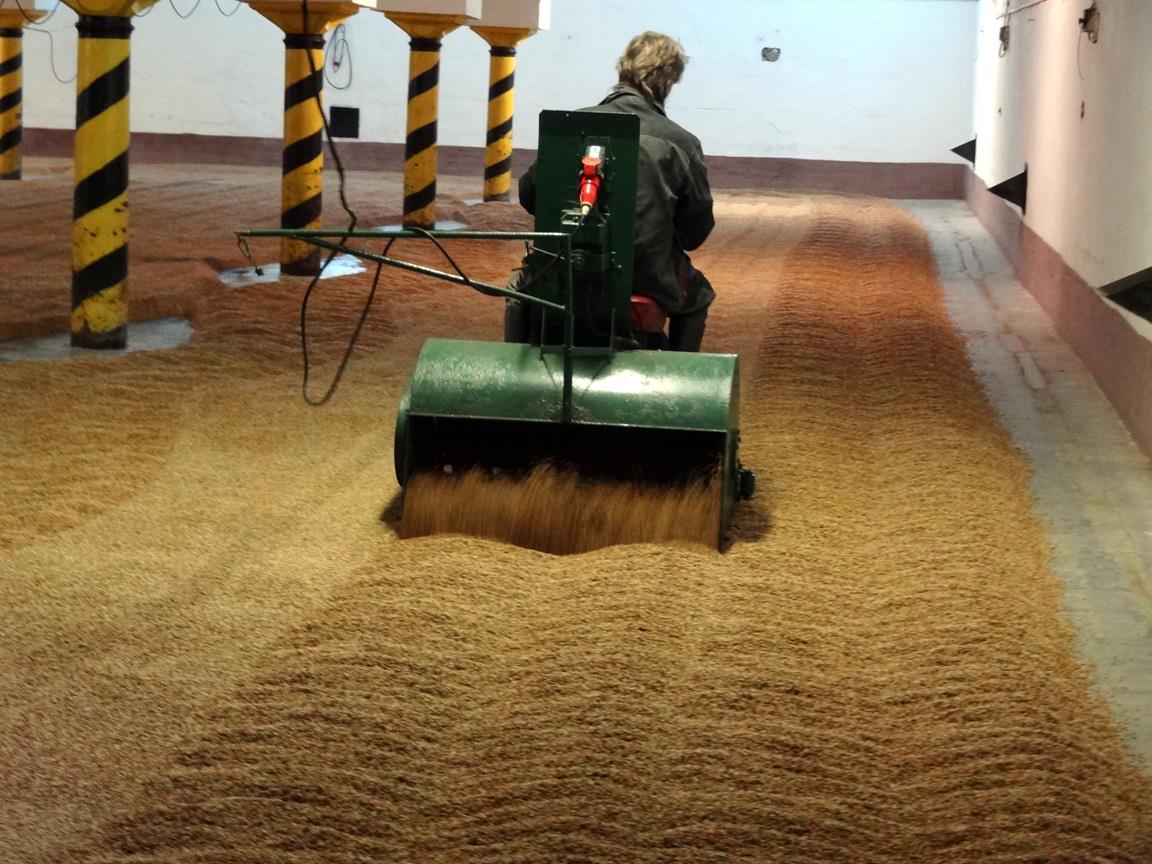
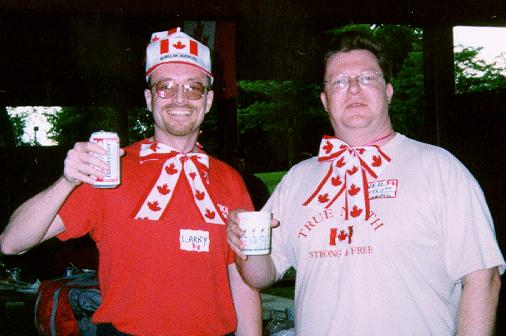



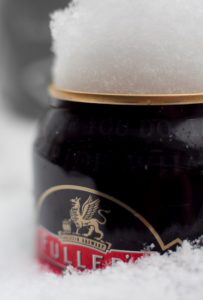
 Yuletide. Its been busy so far this month but after one last late evening meeting for work tonight I think I might be sliding into Yule proper. As I mentioned a few weeks ago, the days of the Christmas Yuletide Hogmanay Kwanzaa and Hanukkah Beery photo contest may be well past us but the archives go on and on. To the left is
Yuletide. Its been busy so far this month but after one last late evening meeting for work tonight I think I might be sliding into Yule proper. As I mentioned a few weeks ago, the days of the Christmas Yuletide Hogmanay Kwanzaa and Hanukkah Beery photo contest may be well past us but the archives go on and on. To the left is 



